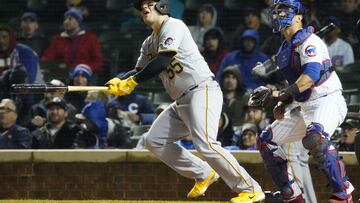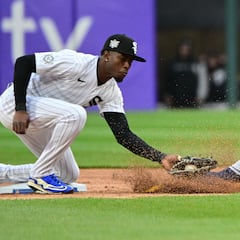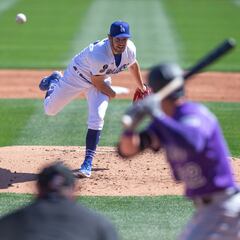Are baseballs to blame for the low home run numbers this season?
MLB has been accused of “de-juicing” baseballs this season and it has had a profound effect on the number of home runs hit around the league in 2022.

In the past two decades there have been many claims, dismissed by the league and ball manufacturers, that baseballs had been “juiced” to generate more home runs.
With any hand-made product, you will have a not-unreasonable amount of scrutiny on the small differences in each ball and how those affect performance. In recent seasons, MLB has continued to change the balls and for the 2022 season have required all teams to store their baseballs in a humidor.
Los Angeles Dodgers Dave Roberts has added his voice to the chorus of skeptics about the baseballs being used. When Gavin Lux launched a ball with an exit velocity of 103.4 mph and a launch angle of 28 degrees in the Los Angeles Dodgers’ 7-4 win over the Atlanta Braves, everyone was shocked that it ended up a 390 feet flyout to center field. Roberts expressed this shock when asked. “Velocity off the bat, trajectory, time of day, I’m not a conspiracy theorist, but it just seems like something’s different.”
Notes: Roberts’ spring speech, Bellinger’s slump, MLB humidors https://t.co/pDqH23a1W5 #MLB #Baseball #BaseballTwitter #Dodgers #LA #LosAngeles #LosAngelesDodgers
— BaseballBaseball247365 (@Baseball247365a) April 10, 2022
So far this season, home runs are down by about 5%, according to ESPN’s Jeff Passan, largely attributable to the use of humidors. Passan argues that this is the lowest scoring since the first half of the 2015 season, when MLB allegedly introduced the juiced ball following the All-Star break.
2021 MLB season through April 15:
— Codify (@CodifyBaseball) April 22, 2022
2,227 baseballs hit 100+ MPH
259 baseballs hit 400+ feet 🔥
2022 MLB season through yesterday:
2,236 baseballs hit 100+ MPH
210 baseballs hit 400+ feet 🧊
In previous seasons, humidors were only used in Coors Field, where offensive stats are naturally skewed by the thin air at such high elevations. This season, however, the use of humidors is required across the league and the result, whether intended or not, is that balls have become deadened.
Humidors work by bringing baseballs to an average humidity, making baseballs in a dry park more humid, and therefore heavy, and drying out the baseballs, and therefore lighter, in more humid ballparks.
In general, baseballs travel further in humid air than they do in dry air, so in dry parks, like Dodger Stadium, teams are now seeing a double-whammy of having to battle the natural tendency of the ball to travel less distance compounded with the ball being physically heavier than normal.
Dave Roberts has questions about the baseballs being used this season.https://t.co/W4mp7KVtn0 pic.twitter.com/8zYcgPqGp5
— Dodger Blue (@DodgerBlue1958) April 22, 2022
Dave Roberts is concerned about that trend. “There’s been a handful that I felt off the bat, the sound, the trajectory, the velocity, that I thought would be home runs that didn’t go out of the ballpark.”
Related stories
The league argues that humidors are not dampening the flight of the ball, but making them as uniform as possible. They maintain that as the weather becomes hotter and drier across the nation, we should see home runs increase across the league.
The focus on analysis-driven baseball has been behind the rise in strikeouts and home runs over recent years, and while this shift to all-or-nothing batting divides fans into those who love it and those who hate it, absolutely nobody wants to see a return to the dead-ball era.

